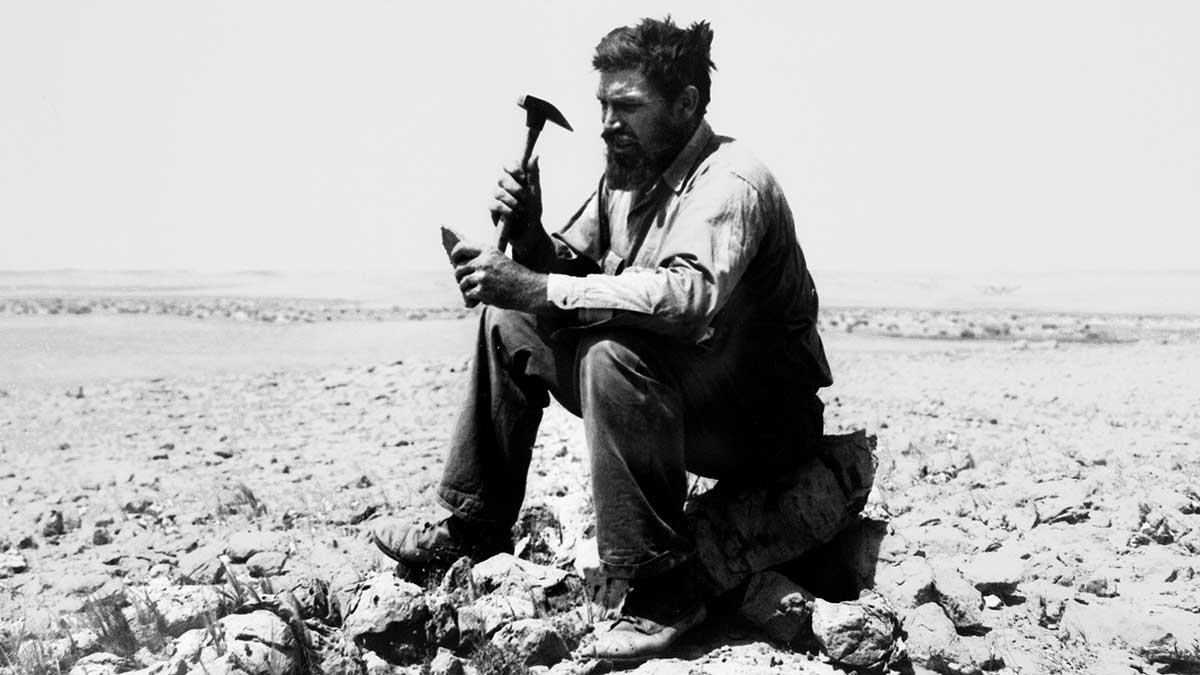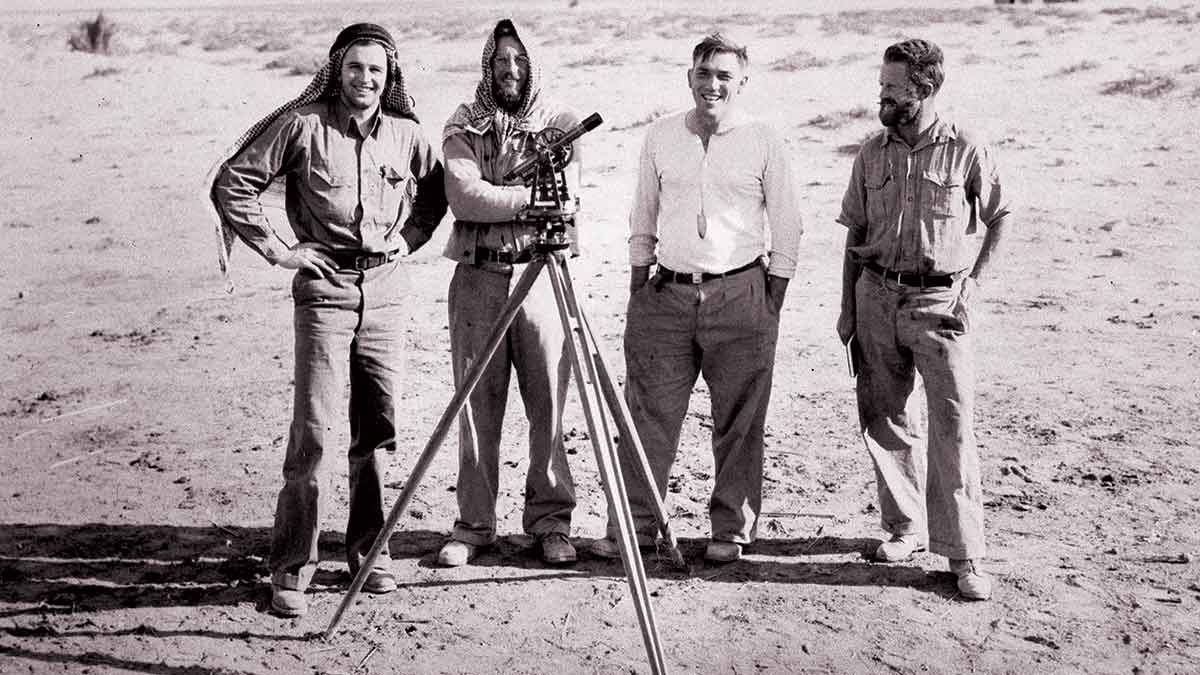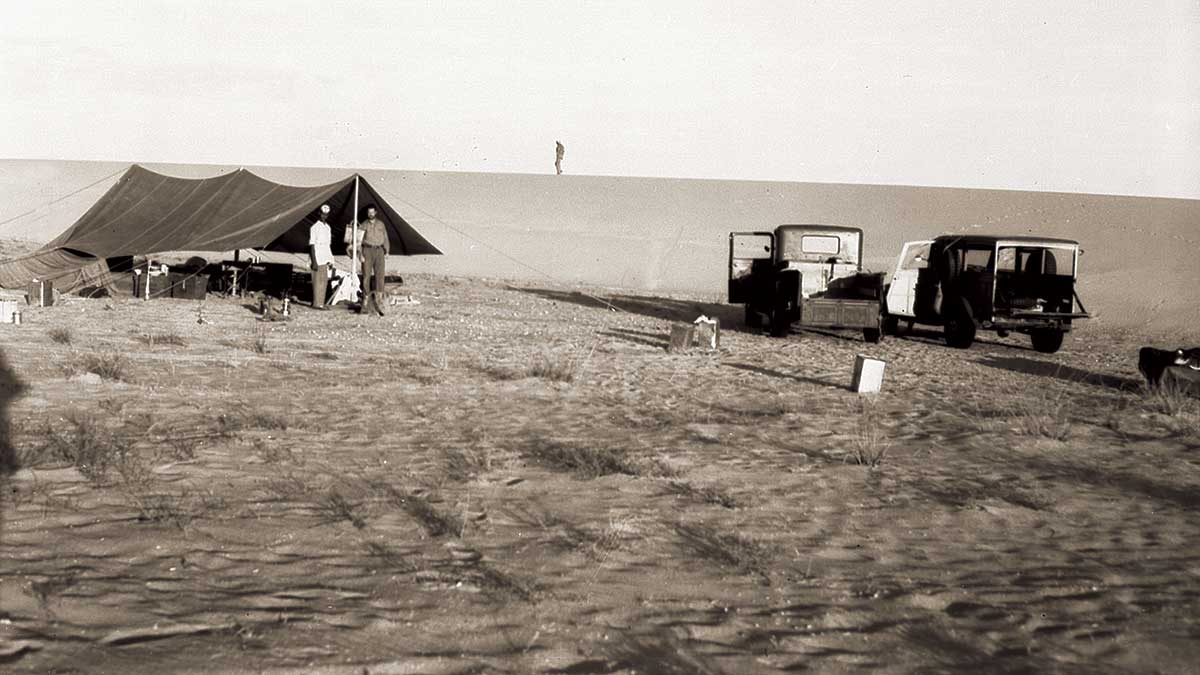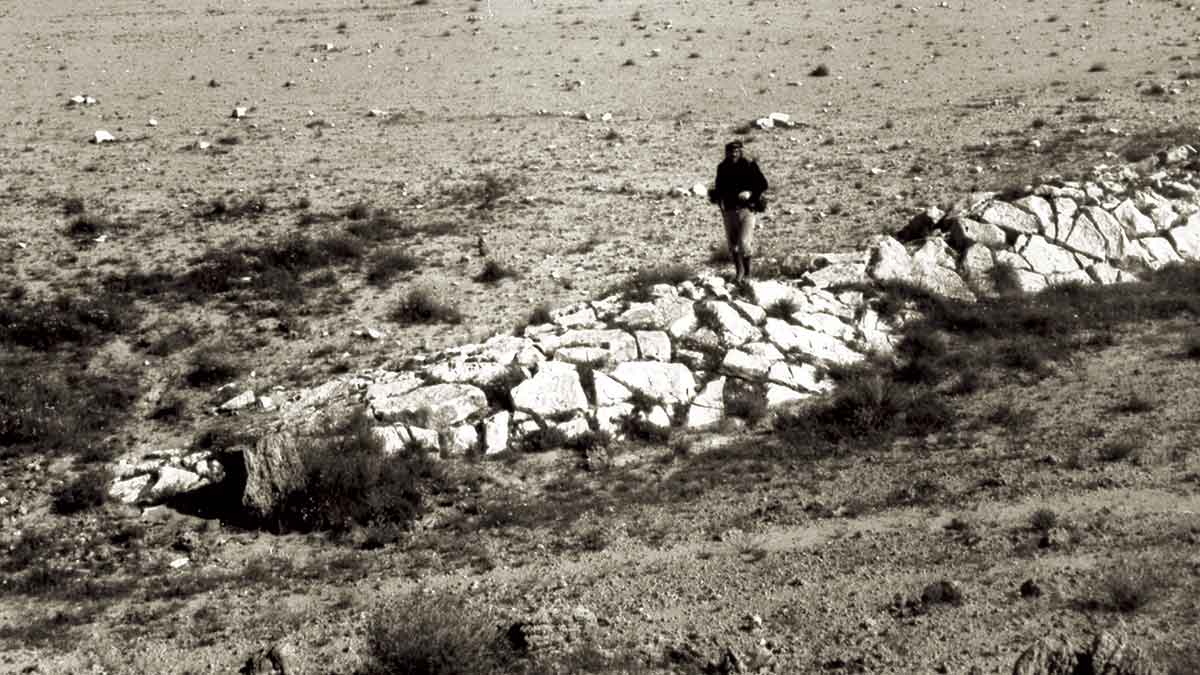Our History
Paying tribute to Max Steineke’s drive to help discover Ghawar

By August 07, 2022
Ghawar is so huge — 280 km long by 36 km wide — that it was not discovered as a single oil field.
Max Steineke was famously responsible for the injunction to “drill deeper” at Dammam Well-7, where the first commercially viable Saudi Arabian oil was discovered. The real jewel in Saudi Arabia, though, is Ghawar, the world’s largest mega-field. But what exactly was Steineke’s role in Ghawar?
(EDITOR’S NOTE: This year, 2022, marks the 70th anniversary of the death of Max Steineke, the American petroleum geologist whose efforts led to the discovery of oil in commercial qualities in the Kingdom at Dammam No. 7, now known as the Prosperity Well.)

This historic picture of the rugged American geologist as he sat in the desert in 1935, rock hammer in hand, epitomizes the early pioneers of the 1930s. It was their example of determination and professionalism that created the culture that is still very evident in Aramco to this day.
Max Steineke was a natural leader and was promoted to chief geologist in 1936, two years after arriving in the Kingdom. He is famous for his intervention in Dammam Well 7. Today, looking back to those distant days, it’s natural to assume that the famous Steineke discovered Ghawar, too. The story of his role in Ghawar is more subtle than at Dammam 7, but also at the same time indicative of his genius. He certainly was involved, no doubt about that, but so were others.

Abqaiq — Steineke’s incredible discovery
We need first to step back, though, to see how Steineke really was one of a kind and look at the discovery of the Abqaiq field, which preceded the discovery of Ghawar. Fred Davies was a senior geologist, previously involved in the sister company’s oil discovery in Bahrain, and an outstanding oilman, who went on to be Aramco CEO for most of the 1950s.
But even he was in awe of Steineke after an extraordinary incident that took place toward the end of 1936. Steineke drove Davies to where Abqaiq is today and stopped in a dip in the sand dunes and pointed out Jebel Dam and the distant Jebel Ghuraymil.
“Oil has to be below the ground … we have to drill here,” said Steineke. “I can’t even see what you’re pointing at, but you may be right,” responded Davies. And four years later, the company drilled at that exact spot and discovered what is to this day the world’s 11th largest super-giant field.
Steineke was the man who first came to understand the stratigraphy and the structure underlying eastern Arabia’s nearly featureless surface. As a field geologist he rated with the best anywhere.
Ghawar
Ghawar is so huge — 280 km long by 36 km wide — that it was not discovered as a single oil field. Even in 1949, Steineke described Ain Dar and Haradh as separate oil fields; today they form Ghawar’s northern and southern production areas, respectively. It was only in 1954, after extensive drilling, that Aramco announced that the two were definitely connected.
But right from 1935 Steineke had had his suspicions that there was oil in the Ghawar area, which was why he was so excited when Ernie Berg, one of the geologists on Steineke’s team, made an extraordinary discovery in January 1940.
Berg had been puzzled by an unexplained bend in Wadi al-Sabha, near Haradh. So, he measured all the flat-topped jebels and realized that they indicated a structural uplift, or dome, which is the sign that oil is likely underground at that location. When Steineke studied Berg’s maps, he was very excited and declared that Berg had surely discovered a new oil field. (Due to WW2, it was 1949 before three successful wildcat wells were drilled in Haradh.)
Steineke never tried to pass the discovery off as his own, even though he was recognized as the leading geological authority.

A great light extinguished too early
Another member of Steineke’s team, Tom Barger, later wrote that Steineke was one of “the two most remarkable men I was ever to encounter in my life.” (The other was the legendary desert guide, Khamis ibn Rimthan.) Coming from a man who became the Aramco CEO for most of the 1960s, this is praise indeed. But Steineke’s renown was not limited to within Aramco. In 1951, the American Association of Petroleum Geologists awarded Steineke the Sidney Powers Gold Medal, one of the greatest honors that can be bestowed on a petroleum geologist.
Steineke was irrepressible, a man who did what needed to be done, and who did not hide behind his reputation or his position. Sadly, it was the cause of his early demise. A premonition of what was to come happened in September 1935 when he drove from Jubail, where the geologists were based at that time, to Dhahran, with his colleague J.W. Hoover. There was no road then and the car got stuck in a sabkha (a salt flat). Hoover wrote in his diary that evening “Max worked so hard he almost passed out.”
Unfortunately, Steineke experienced a repeat event in 1947, but on this occasion, while struggling to release the vehicle, it slipped back and hit his leg, causing a blood clot. The following year, the clot caused a stroke, and his health deteriorated. He returned to California, where he continued to work for the company as a consultant until his death in 1952, aged only 54.
The timing of his death meant he never lived to see the confirmation of what he knew in his heart — that he and his team had together discovered Ghawar, the greatest oil field in the world.
Many readers will have stayed in the Guest House in Dhahran named in his honor, but the greater memorial is in the hearts of grateful Aramcons around the world, for whom the name Max Steineke lives forevermore.



